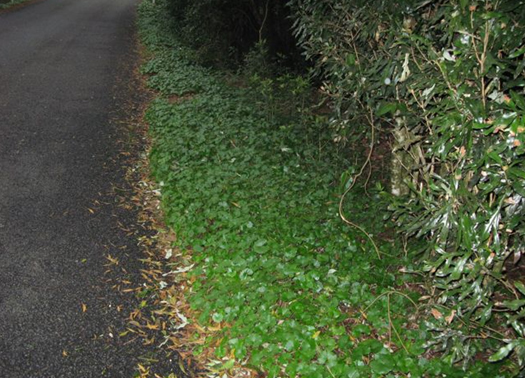|
As noted on the “Rationale” page, the World Heritage Convention requires signatories There is a fundamental need for government policy and practice, at both State and Local levels, to recognise Springbrook as a World Heritage precinct and plan and manage accordingly. South East Queensland Regional Plan The Queensland Government’ has defined a vision for Springbrook in the South East Queensland Regional Plan (2009–2031): The vision for Springbrook is of a vibrant community of residents and visitors sustaining and sustained by World Heritage values, and a mostly natural landscape that inspires and revives the human spirit Local councils are required to incorporate provisions in the South East Queensland Regional Plan in their own planning instruments. While the Springbrook Vision is a significant planning reform, other changes made to the Regulatory Provisions of the Regional Plan in 2009 cause great concern. The two villages at Springbrook are defined as ‘Urban Footprint’. The remainder of the Plateau is zoned as Regional Landscape and Rural Production Area. Within this latter area, development for short-term accommodation for up to 300 persons now does not require assessment by referral agencies but will be left entirely in the hands of local government. This amendment is either an inappropriate response to vigorous lobbying by the tourism industry or an ill-conceived concept that takes little or no account of environmental impacts. At Springbrook, there are no short-term accommodation businesses catering for more than around 50 persons. The new Regional Plan sends a message to local government that providing for much larger tourist developments, including the expansion of existing tourism businesses, has the support of the Queensland Government. Much of the short-term accommodation at Springbrook caters for couples looking for a romantic getaway or honeymoon. The Regional Plan now provides for a development with 150 cabins within the rural landscape without impact assessment. It is recognised that there may be areas within the Regional Landscape and Rural Production Area in SEQ where a 150-cabin resort may not be unreasonable. This highlights the fundamental weakness resulting from this broad category covering everything from cleared farmland to areas of remnant and regenerating vegetation of high significance for biodiversity. There is a need — given climate change, an urgent need — to create another category of land for which the primary use is conservation. Separate, specific assessment criteria would reflect the conservation purpose. This land would not only include significant areas of remnant and regenerating vegetation but also cleared or otherwise degraded land to be restored to provide linking corridors and expanded habitat. Springbrook Local Area Plan Apart from issues with the Regional Plan, there is a need to revise the Local Area Plan (LAP). This will require close co-operation between the State Government and Gold Coast City Council. While the LAP makes reference to World Heritage listing of the national park, there is essentially no attempt to address World Heritage values or their presentation in the provisions. One provision of particular concern is the intention to maintain cleared areas: It is intended to preserve the character of the rural areas and, in particular, the predominantly cleared areas, as an important asset for residents of, and visitors to, the Springbrook Plateau. The existing landscape of the Plateau is to be protected, and future developments are to enhance the recognized landscape character. This provision is effectively at odds with another statement of intent within the LAP: It is intended to preserve both the valuable natural areas of the Springbrook Plateau and the linkages between those areas, and to encourage the rehabilitation of links between important natural areas. Careful consideration is needed to incorporate the Queensland Government’s vision for Springbrook into the LAP. Road verge management Management of road verges at Springbrook is a contentious issue. The Queensland Government is responsible for Springbrook Road while all other roads are the responsibility of the Council. Both governments approach road verge management with little attention to biodiversity protection or visual amenity. Queensland Government contractors have sprayed herbicide from a moving vehicle into the roadside vegetation, killing native plants. Council workers have, under instruction, unnecessarily cleared native vegetation up to several metres from the road edge and regularly mow the native Pennywort that provides a natural and very attractive verge. Road verges are kept mown wherever possible and cleared, grassy verges are extending. A specific consequence is regular road kills of pademelons attracted to the grass. It is imperative that road verge management practices that address World Heritage values and presentation are established as a matter of priority. |
 Native Pennywort once lined major sections of road in Springbrook’s ‘high country’. Most has been replaced by weeds. |